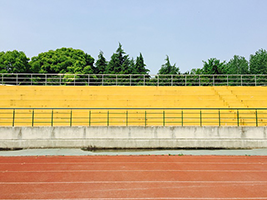5 Ways to Treat a School Sports Injury without Painkillers RICE to the Rescue
It’s great seeing all the kids out on the fields playing sports again, now that the school year has begun. But we all know that along with the fun comes the risk of sports injuries.
We believe there is an important strategy that should be put into place immediately following an injury such as a knee or ankle sprain – one that can help relieve pain and swelling, and promote healing and flexibility. It’s called RICE – Rest, Ice, Compression, and Elevation.
Here are the steps to follow:
- Rest. Rest and protect the injured area. Take a break from the activity that caused your pain or soreness.
- Ice. Cold will reduce pain and swelling. Apply an ice or cold pack right away to prevent or minimize swelling. Apply the ice or cold pack for 10 to 20 minutes, 3 or more times a day. After 48 to 72 hours, if the swelling is gone, apply heat to the area that hurts. Do not apply ice or heat directly to the skin. Place a towel over the cold or heat pack before applying it to the skin.
- Compression. Compression, or wrapping the injured or sore area with an elastic bandage (such as an Ace wrap), will help decrease swelling. Make sure not to wrap it too tightly, because this can cause more swelling below the affected area. Loosen the bandage if it gets too tight. Signs that the bandage is too tight include numbness, tingling, increased pain, coolness, or swelling in the area below the bandage. Talk to your doctor if you think you need to use a wrap for longer than 48 to 72 hours because that could mean a more serious problem is present.
- Elevation. Elevate the injured or sore area on pillows while applying ice, and anytime you sit or lie down. Try to keep the area at or above the level of your heart to help minimize swelling.
Massaging the injured area can also be helpful. An easy form of massage that you or a trusted adult can try is effleurage, a French word meaning “to skim” or ” touch lightly.” The technique involves making light stokes with your hands, in an upwards direction towards your heart, since this is the direction of blood flow. After completing the upward strokes, bring your hands lightly down without applying too much pressure. The whole movement should be repeated using gentle stroking techniques and covering as much of the affected area as possible. Repeat this technique for 5 minutes while slowly increasing pressure on the upwards strokes.
Once the soreness and pain are gone, it’s a good idea to begin stretching and strengthening exercises based on guidance from your doctor.

